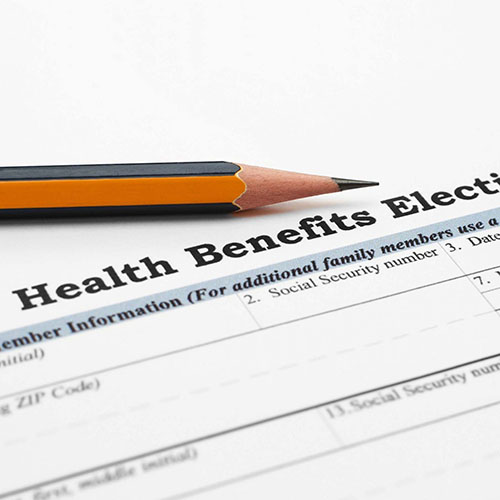Attract & Retain the Best Talent for your Business


The best coverage from the nations largest provider.
Improve employee retention by offering them a full range of benefits including comprehensive medical, vision, dental, & ancillary coverages from United Healthcare, one of the nations largest networks. With dozens of plans to choose from, your employees can pick the coverage that fits their needs.
Our benefits specialists will help you choose the insurance plans the meet your business needs while benefiting your employees.
Depending on the service requested, our third-party vendors or Jay Finn, CPA dba J A Finn, CPA, PLLC will serve your needs going forward. For S corps remember the Solo 401k and the Simple-IRA replace the Social Security you’re not receiving!
Schedule a Consultation

Private Employee Investment Plans

Public Employee Investment Plans

Self-employed Investment Plans
Private Employee Investment Plans
A 401k allows payroll deferrals up to $19,500 per year with up to $6,500 additional for those contributors at least 50 years old. It also allows a match by the employer of 6% of their salary with certain limitations. A 401(k) plan is beneficial for investors who prefer a safe investment strategy with maximum long-term growth.
A Solo-401k, however, is only available for one-person corporations (C or S). It is also available for spouses who are co-owners of a C or S corp. The contribution levels are the same as the regular 401k and it allows a match by the employer of 25% of their salary. Once another employee is hired (besides a spouse) the Solo 401k may no longer accept contributions however you may transfer the Solo 401k to a Simple IRA for current contributions.
A Simple IRA functions as a Solo 401k for sole proprietorships, partnerships, or corporations (C or S) with multiple employees. One of two matching criteria must be met in order for a corporation to offer a Simple IRA for its employees. You can either offer all participating employees a 3% match or offer all employees 2% of their salary regardless of if they participate in the IRA.
The Simple IRA allows for a $13,500 salary deduction for employees under the age of 50 and $3,000 for those over the age of 50 on their taxes.
Managerial costs for the Simple IRA are low compared other plans like the 401k, which is why this is a good option for small to medium size business.
An SEP IRA is a retirement savings plan established by employers (including the self-employed) for the benefit of their employees & themselves & allows employers to make tax-deductible contributions on behalf of eligible employees.
SEP’s are beneficial because they’re easy to set up, have low administrative costs, & allow an employer to determine how much to contribute each year.
SEP’s also have higher annual contribution limits than standard IRA’s. SEP’s are fundamentally considered a traditional IRA with the ability to receive employer contributions. A major benefit of an SEP is that employer contributions are immediately vested.
Keogh plans are retirement plans for self-employed people as well as unincorporated businesses, such as sole proprietorships and partnerships.
The IRS refers to Keogh plans as qualified plans, and there are two types: Defined-benefit Plans include profit-sharing plans and money purchase plans. Defined-contribution Plans are also known as HR(10) plans.
Keogh plans can invest in the same set of securities as 401k’s & IRAs including SEP/IRA’s, stocks, bonds, certificates of deposit and annuities.
Public Employee Investment Plans
A 403b (also known as a TSA, annuity or a tax sheltered account)) is similar to a 401k. With a 403b plan educators, hospital workers, & certain other government employees can deposit a portion of their salary, pre-tax, into a fixed annuity or index annuity to help future retirement.
The IRS allows these same pre-tax deposits to be invested into mutual funds or a variable annuity. However, direct investments to mutual funds rather than annuities may be preferable, depending on your risk level and overall goals.
Funds deposited into TSA’s help reduce your income before taxes, similar to cafeteria plans. There is a maximum amount which can be deposited annually (per calendar year), subject to the tax law changes. These contributions may be higher in cases where you have been at the same district for more than 15 years and/or are over 50 years of age.
403b’s (TSA’s) allow withdrawals but if funds are withdrawn prior to age 59½ or retirement (whichever is sooner, there are 10% IRS penalties and the withdrawal always becomes taxable income. However, loan provisions are sometimes available.
A 457 is a code section of the IRS that currently allows salary deferrals (reductions) up to $19,500 per year with up to $6,500 additional for those contributors at least 50 years old. Differing from a 403b, a non-profit or educational institution may choose one 457 program.
Funds cannot be distributed until age 70 or death or unforeseen emergency. More importantly, if you severed from employment you do not have to wait until 59 ½ to receive your money without IRS penalty in a lump sum or distributions.
Self-employed Investment Plans
A traditional IRA is for individuals who do not have a 401k. In 2016/2017 an individual can take a tax deduction for an IRA from regular income for $6,500.00 ($7,500.00, if over 50 years old). A spouse of a worker who isn’t working may set-up a spousal IRA for the same limits at any time during the year.
Roth-IRA’s are a new way of saving tax-free or can be a conversion from an IRA once you pay the taxes on an IRA. To get the tax-free savings on the earnings, you must not take the money out before 59 ½ and must also leave the money in the fund for 5 years.
An SEP IRA is a retirement savings plan established by employers (including the self-employed) for the benefit of their employees & themselves & allows employers to make tax-deductible contributions on behalf of eligible employees.
SEP’s are beneficial because they’re easy to set up, have low administrative costs, & allow an employer to determine how much to contribute each year.
SEP’s also have higher annual contribution limits than standard IRA’s. SEP’s are fundamentally considered a traditional IRA with the ability to receive employer contributions. A major benefit of an SEP is that employer contributions are immediately vested.
Keogh plans are retirement plans for self-employed people as well as unincorporated businesses, such as sole proprietorships and partnerships.
The IRS refers to Keogh plans as qualified plans, and there are two types: Defined-benefit Plans include profit-sharing plans and money purchase plans. Defined-contribution Plans are also known as HR(10) plans.
Keogh plans can invest in the same set of securities as 401k’s & IRAs including SEP/IRA’s, stocks, bonds, certificates of deposit and annuities.
